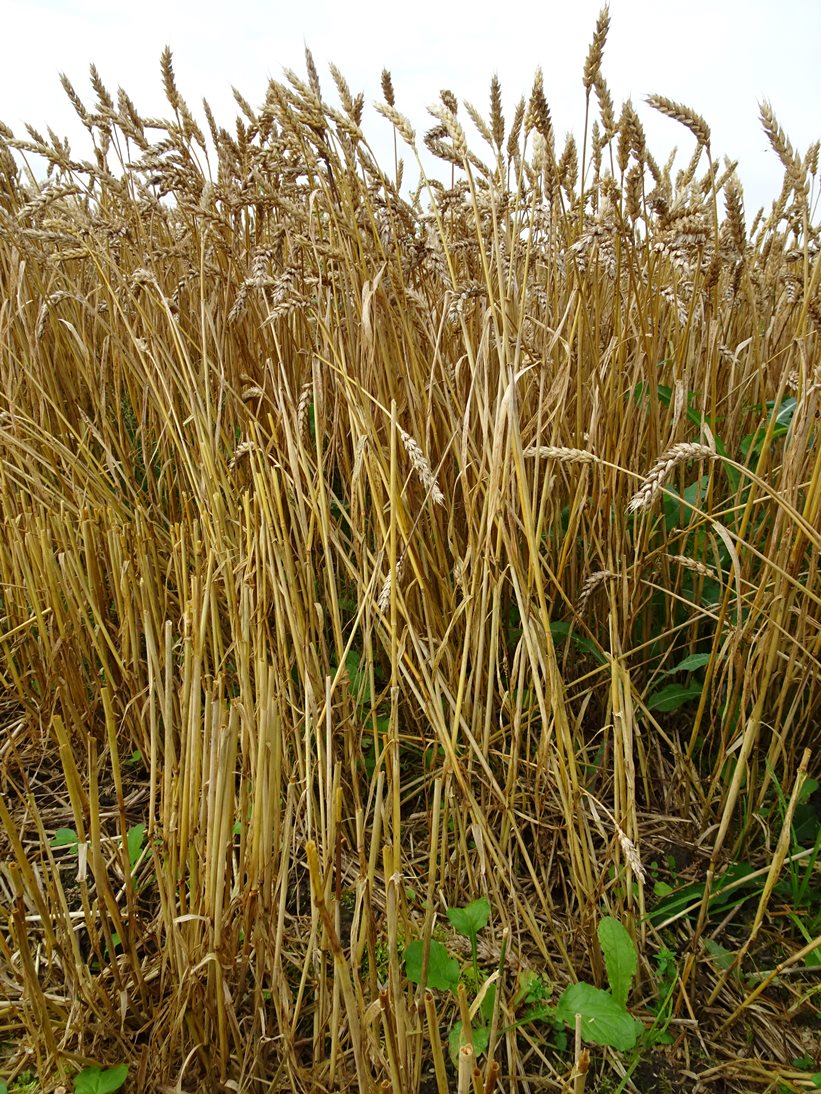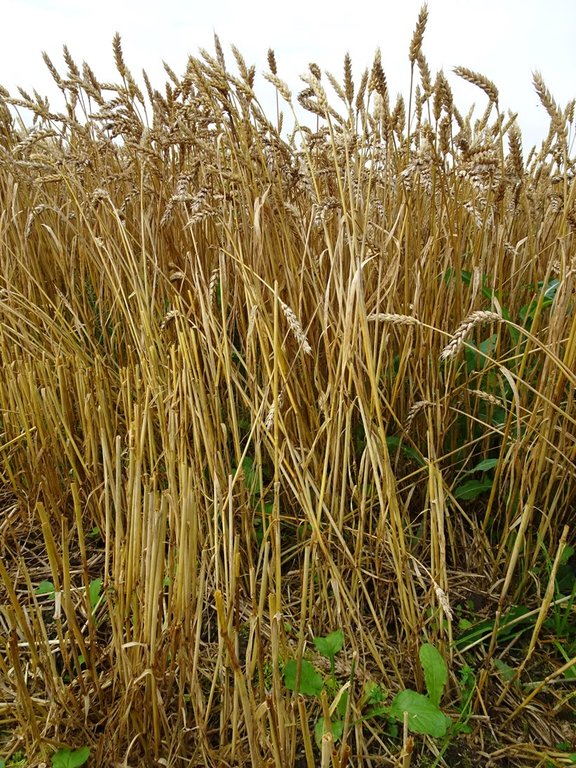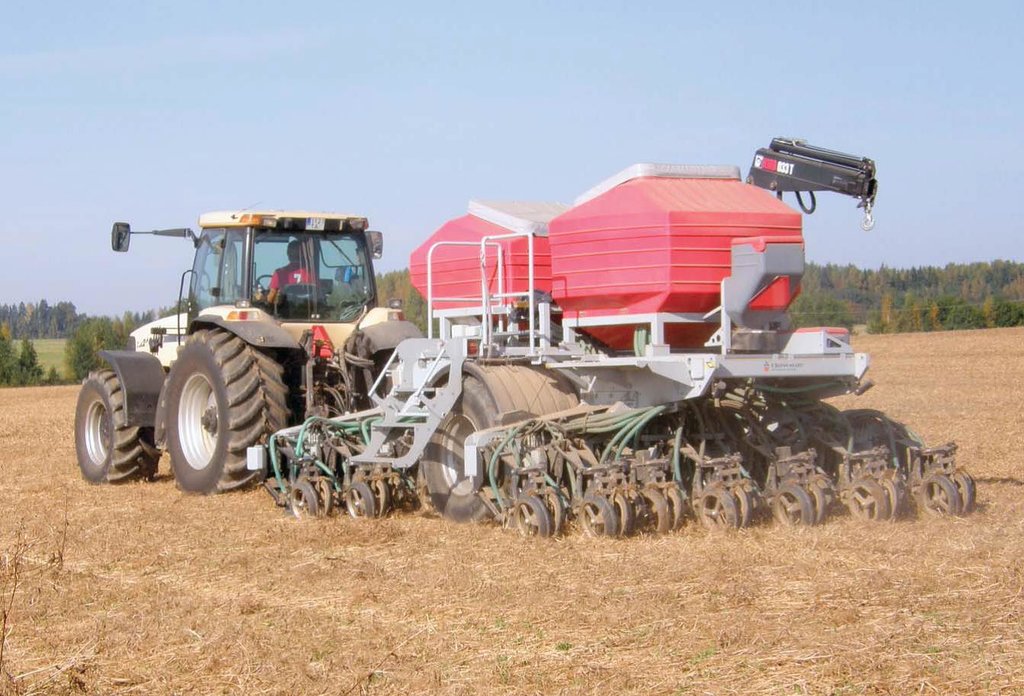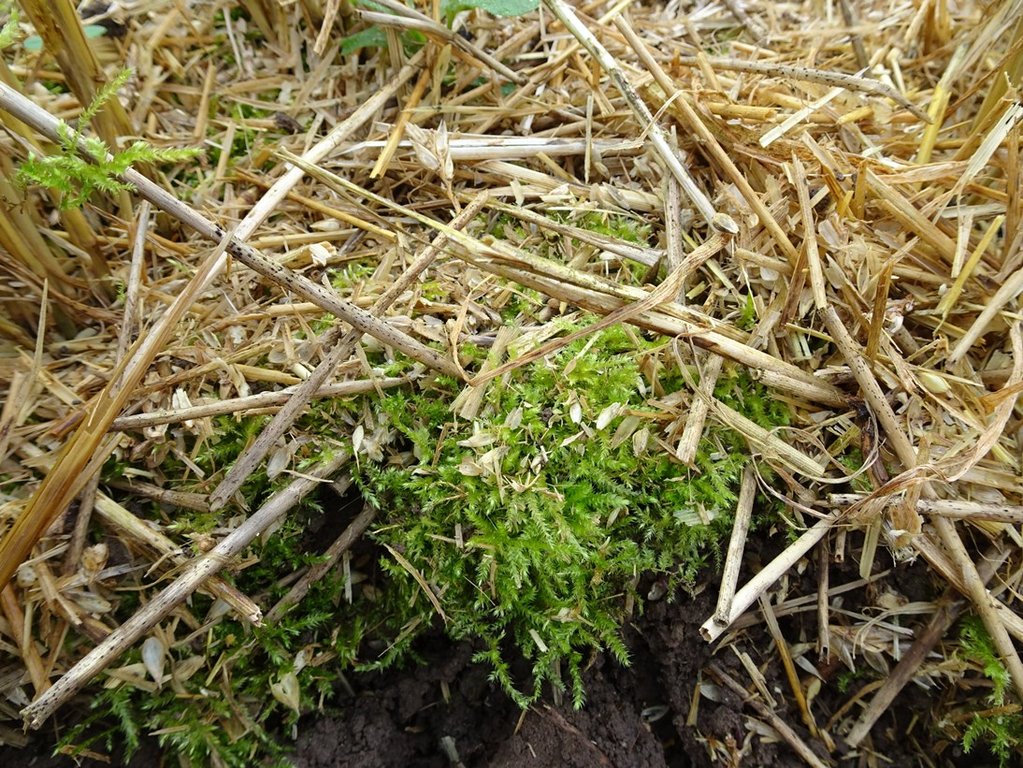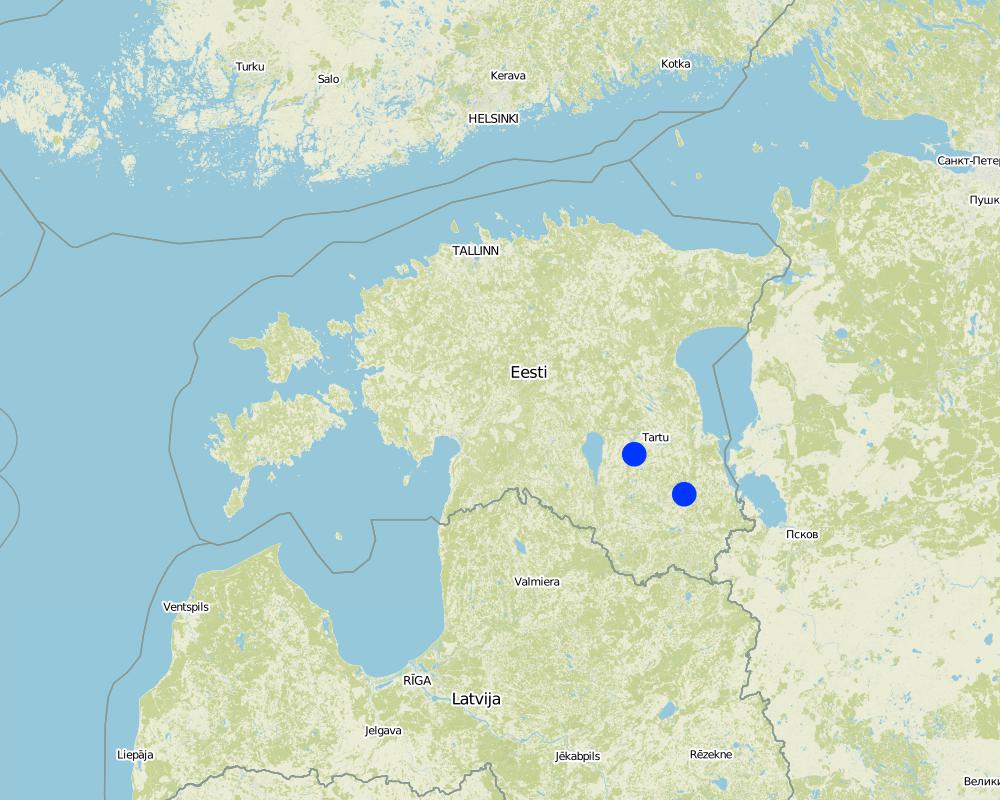No-tillage [Estônia]
- Criação:
- Atualização:
- Compilador/a: Endla Reintam
- Editor: –
- Revisores: Ursula Gaemperli, Gudrun Schwilch, Alexandra Gavilano
Otsekülv
technologies_3089 - Estônia
Veja as seções
Expandir tudo Recolher tudo1. Informação geral
1.2 Detalhes do contato das pessoas capacitadas e instituições envolvidas na avaliação e documentação da tecnologia
usuário de terra:
Tobreluts Toomas
Pirmastu OÜ
Estônia
researcher:
Penu Priit
Estonian Agricultural Research Centre
Estônia
Nome do projeto que facilitou a documentação/avaliação da Tecnologia (se relevante)
Interactive Soil Quality assessment in Europe and China for Agricultural productivity and Environmental Resilience (EU-iSQAPER)1.3 Condições em relação ao uso da informação documentada através de WOCAT
O/a compilador/a e a(s) pessoa(s) capacitada(s) aceitam as condições relativas ao uso de dados documentados através da WOCAT:
Sim
1.4 Declaração de sustentabilidade da tecnologia descrita
A tecnologia descrita aqui é problemática em relação a degradação da terra de forma que não pode ser declarada uma tecnologia de gestão sustentável de terra?
Não
2. Descrição da tecnologia de GST
2.1 Descrição curta da tecnologia
Definição da tecnologia:
No-till farming (also called zero tillage or direct drilling) is a way of growing crops or pasture from year to year without disturbing the soil through tillage.
2.2 Descrição detalhada da tecnologia
Descrição:
The technology is applied in sub-humid climate with an average of 696 mm of precipitations per year, from which more comes from July to October and less in March and April. Average annual temperature is +4 C, length of the growing period is 180-195 days. The territory is mostly flat, the southern part is hilly with slopes of 6-10%. Average altitude from the sea level is 50 m. About half of the Estonian territory is above 50 m and half is below it. Soils are from very shallow (less than 0.1 m) in the north to very deep (> 120m ) in the south. Soil cover is very variable. In the agricultural area the soils are medium textured with low (< 1%) to high (>5%) organic matter in topsoil. Groundwater is near the surface in wet soils and deep in hilly areas. Biodiversity varies from high to low depending on soil and landscape. Market orientation of production system is mixed and off-farm income is less than 10%. Relative level of wealth is average from individual households to cooperatives. Soil management is mechanized. Land belongs to land users, but is leased also in case of bigger farms (over 100 ha).
The purpose of the technology is to reduce soil disturbance and with that to reduce erosion and leaching, increase carbon storage, water infiltration and biological activity. Only 5-10% of the soil surface is disturbed during sowing. The drilling is made by special machinery and thus no-till farming requires specialized seeding equipment designed to plant seeds into undisturbed crop residues and soil. Drilling depth depends on the specific needs of the culture. If the straw remains on the field, it should be chopped to smaller pieces (25-40 mm). For direct seeding it is good if the previous culture was seeded with wider spacing, for example 25 cm and harvest height is 15-20 cm. New sowing will be done between previous crop rows. The highest investment to this technology is the new drilling machine. At the same time there is no need for special tillage machines. In order to help eliminate weed, pest and disease problems, crop rotations and pesticides are used. The system is not suitable for root crops. The no-till system is suitable for cereal based cropping systems as well as for renewing grasslands. The suitable crop rotation, for exampe, is: winter oilseed rape - winter wheat - pea (or bean) - winter wheat - spring barley undersown with red clover - red clover. The main benefit is the reduced working time, fuel costs and with that the lower net-cost of the product, but also the better soil structure. The adoption of the technology may increase weediness and pests and decrease the yield due to the preliminar soil compaction of upper 10-20 cm soil layer. If the soil surface of the field is not enough levelled out, the uniformity of the depth of the seedlings can suffer. There is also increased use of pesticides to control weeds, pests and diseases compared to minimum and conventional tillage. The technology is most suitable for medium-texture soils.
2.3 Fotos da tecnologia
2.5 País/região/locais onde a tecnologia foi aplicada e que estão cobertos nesta avaliação
País:
Estônia
Região/Estado/Província:
Tartu county, Põlva county
Especificação adicional de localização:
Tartu county, Meeri; Põlva county, Puuri
Especifique a difusão da tecnologia:
- Uniformemente difundida numa área
Se a área precisa não for conhecida, indicar a área aproximada coberta:
- 1-10 km2
Comentários:
The total area of no-till in Estonia is ca 42 000 ha. On the farm near Tartu it is 1700 ha of land, of which 300 ha are grasslands. The farm near Põlva encompasses an area of 850 ha of which 330 ha are grasslands. The whole area of both farms is managed by no-tillage.
Map
×2.6 Data da implementação
Caso o ano exato seja desconhecido, indique a data aproximada:
- menos de 10 anos atrás (recentemente)
2.7 Introdução da tecnologia
Especifique como a tecnologia foi introduzida:
- atráves de inovação dos usuários da terra
3. Classificação da tecnologia de GST
3.1 Principal/principais finalidade(s) da tecnologia
- Reduz, previne, recupera a degradação do solo
- reduce tillage cost
3.2 Tipo(s) atualizado(s) de uso da terra onde a tecnologia foi aplicada

Terra de cultivo
- Cultura anual
Cultivo anual - Especificar culturas:
- cereais - cevada
- cereais - aveia
- cereais - centeio
- wheat
Número de estações de cultivo por ano:
- 1
Especifique:
One harvest of cereals.
3.3 O uso do solo mudou devido à implementação da Tecnologia?
O uso do solo mudou devido à implementação da Tecnologia?
- Sim (Por favor, preencha as perguntas abaixo com relação ao uso do solo antes da implementação da Tecnologia)

Terra de cultivo
- Cultura anual
Comentários:
Before implementation of the no-tillage the conventional and/or reduced tillage was used.
3.4 Abastecimento de água
Abastecimento de água para a terra na qual a tecnologia é aplicada:
- Precipitação natural
3.5 Grupo de GST ao qual pertence a tecnologia
- Solo/cobertura vegetal melhorada
- Perturbação mínima ao solo
3.6 Medidas de GST contendo a tecnologia

Medidas agronômicas
- A3: Tratamento da superfície do solo
3.7 Principais tipos de degradação da terra abordados pela tecnologia

Erosão do solo pela água
- Wt: Perda do solo superficial/erosão de superfície

Erosão do solo pelo vento
- Et: Perda do solo superficial

Deteriorização química do solo
- Cn: declínio de fertilidade e teor reduzido de matéria orgânica (não causado pela erosão)

Deteriorização física do solo
- Pc: Compactação
3.8 Redução, prevenção ou recuperação da degradação do solo
Especifique o objetivo da tecnologia em relação a degradação da terra:
- Prevenir degradação do solo
- Reduzir a degradação do solo
4. Especificações técnicas, implementação de atividades, entradas e custos
4.1 Desenho técnico da tecnologia
Especificações técnicas (relacionada ao desenho técnico):
The agrotechnology in case of no-tillage depends on available equipments (drill). If the straw remains on the field, it should be chopped to smaller pieces of 25-40 mm. For direct seeding it is good if the previous culture was seeded with wider spacing, for example 25 cm. Harvest height is 15-20 cm. New seeding will be done between previous crop rows.
Autor:
Endla Reintam
Data:
14/08/2017
4.2 Informação geral em relação ao cálculo de entradas e custos
Especifique como custos e entradas foram calculados:
- Por unidade de tecnologia
Especifique a unidade:
per hectare
Outro/moeda nacional (especifique):
EUR
Se for relevante, indique a taxa de câmbio do USD para moeda local (por exemplo, 1 USD = 79,9 Real): 1 USD =:
1,18
Indique a média salarial da mão-de-obra contratada por dia:
36-40 EUR/day + taxes
4.3 Atividades de implantação
| Atividade | Periodicidade (estação do ano) | |
|---|---|---|
| 1. | New direct seeder |
Comentários:
If you are already active in agriculture, the investment is the new seeder. You also need to have machinery to spread fertilizers and pesticides.
4.4 Custos e entradas necessárias para a implantação
| Especifique a entrada | Unidade | Quantidade | Custos por unidade | Custos totais por entrada | % dos custos arcados pelos usuários da terra | |
|---|---|---|---|---|---|---|
| Equipamento | Direct seeder (3m) | piece | 1,0 | 25000,0 | 25000,0 | 100,0 |
| Custos totais para a implantação da tecnologia | 25000,0 | |||||
| Custos totais para o estabelecimento da Tecnologia em USD | 21186,44 | |||||
Se o usuário da terra arca com menos que 100% dos custos, indique quem cobre os custos remanescentes:
It is possible to apply for an investment support up to 50% of the total price (governmental tool till the year 2020).
Comentários:
The cost of the direct seeder depends on the farmers prefererences regarding the technology. The cheapest direct seeder can be purchased for ca. 25 000 EUR. Better quality of a cross slot seeder that places seeds under the soil (technical drawing and picture) costs ca 200 000 EUR (working width 4.6 m).
4.5 Atividades recorrentes/manutenção
| Atividade | Periodicidade/frequência | |
|---|---|---|
| 1. | Sowing together with fertilization | before drilling (spring crops in spring (April), winter crops in autumn (August)) |
| 2. | Plant protection | in spring 2 weeks before sowing, herbicides, during growth period depending on the needs ca 3 times |
| 3. | Fertilization during growth period | For winter crops in spring after snowmelt in the beginning of growth, for spring crops in the beginning of intensive growth |
| 4. | Harvest and grain transport | At the end of season (end of July to beginning of September depending of the crop) |
| 5. | Drying of grain and soil tillage | after harvest |
Comentários:
The need of plant protection depends on the field conditions. Less pesticides are needed if proper crop rotation with break crops is established and weeds are thus suppressed.
4.6 Custos e entradas necessárias pata a manutenção/atividades recorrentes (por ano)
| Especifique a entrada | Unidade | Quantidade | Custos por unidade | Custos totais por entrada | % dos custos arcados pelos usuários da terra | |
|---|---|---|---|---|---|---|
| Equipamento | Sowing with fertilization | times | 1,0 | 55,9 | 55,9 | 100,0 |
| Equipamento | Plant protection | times | 4,0 | 11,2 | 44,8 | 100,0 |
| Equipamento | Fertilization during growth period | times | 1,0 | 16,2 | 16,2 | 100,0 |
| Equipamento | Harvest and grain transport | times | 1,0 | 118,4 | 118,4 | 100,0 |
| Equipamento | Drying and after harvest activities | times | 1,0 | 132,1 | 132,1 | 100,0 |
| Material vegetal | seeds | kg | 200,0 | 0,28 | 56,0 | 100,0 |
| Fertilizantes e biocidas | Ammonium nitrate (2x per season) | kg | 147,0 | 0,84 | 123,48 | 100,0 |
| Fertilizantes e biocidas | Complex fertilizer (27 kg N, 40 kg P and 112 kg K per ha) (450 kg of fertilizer per ha) | kg | 179,0 | 0,74 | 132,46 | 100,0 |
| Fertilizantes e biocidas | Herbicides (2 times) | times | 2,0 | 27,0 | 54,0 | 100,0 |
| Fertilizantes e biocidas | Fungicides (1 time) | times | 1,0 | 33,2 | 33,2 | 100,0 |
| Fertilizantes e biocidas | Insecticides (1 time) | times | 1,0 | 3,6 | 3,6 | 100,0 |
| Fertilizantes e biocidas | Retartants | times | 1,0 | 14,0 | 14,0 | 100,0 |
| Custos totais para a manutenção da tecnologia | 784,14 | |||||
| Custos totais de manutenção da Tecnologia em USD | 664,53 | |||||
Comentários:
The labour costs are included to the machinery work costs. On average the labour cost for a driver is 15-18 EUR/ha.
The average machinery work costs to produce 6 t of winter wheat were 432 EUR/ha, 400 EUR/ha and 780 EUR/ha in conventional, minimum and no-tillage, respectively in 2016. Cost of production in this case was 137 EUR/t, 132 EUR/t and 128 EUR/t in conventional, minimum and no-tillage, respectively.
To produce the same amount of spring barley, the cost of machinery was 431 EUR/ha, 411 EUR/ha and 366 EUR/ha in conventional, minimum and no-tillage, respectively. Cost of production in this case was 123 EUR/t, 121 EUR/t and 114 EUR/t in conventional, minimum and no-tillage, respectively. It means that the cost of production is 8-11 EUR less than compared with plough based production.
Fuel cost is ca 50% less than in conventional plough based farming.
4.7 Fatores mais importantes que afetam os custos
Descreva os fatores mais determinantes que afetam os custos:
Fuel price, labour costs.
5. Ambiente natural e humano
5.1 Clima
Precipitação pluviométrica anual
- <250 mm
- 251-500 mm
- 501-750 mm
- 751-1.000 mm
- 1.001-1.500 mm
- 1.501-2.000 mm
- 2.001-3.000 mm
- 3.001-4.000 mm
- > 4.000 mm
Especifique a média pluviométrica anual em mm (se conhecida):
696,00
Especificações/comentários sobre a pluviosidade:
Average 696 mm, almost equally spread over the year, more from July to October, less in March and April.
Indique o nome da estação meteorológica de referência considerada:
Tartu Tõravere
Zona agroclimática
- Subúmido
LGP 180-195 days
5.2 Topografia
Declividade média:
- Plano (0-2%)
- Suave ondulado (3-5%)
- Ondulado (6-10%)
- Moderadamente ondulado (11-15%)
- Forte ondulado (16-30%)
- Montanhoso (31-60%)
- Escarpado (>60%)
Formas de relevo:
- Planalto/planície
- Cumes
- Encosta de serra
- Encosta de morro
- Sopés
- Fundos de vale
Zona de altitude:
- 0-100 m s.n.m.
- 101-500 m s.n.m.
- 501-1.000 m s.n.m.
- 1.001-1.500 m s.n.m.
- 1.501-2.000 m s.n.m.
- 2.001-2.500 m s.n.m.
- 2.501-3.000 m s.n.m.
- 3.001-4.000 m s.n.m.
- > 4.000 m s.n.m.
Indique se a tecnologia é aplicada especificamente em:
- Posições convexas
5.3 Solos
Profundidade do solo em média:
- Muito raso (0-20 cm)
- Raso (21-50 cm)
- Moderadamente profundo (51-80 cm)
- Profundo (81-120 cm)
- Muito profundo (>120 cm)
Textura do solo (solo superficial):
- Médio (limoso, siltoso)
Textura do solo (>20 cm abaixo da superfície):
- Médio (limoso, siltoso)
Matéria orgânica do solo superficial:
- Médio (1-3%)
Caso disponível anexe a descrição completa do solo ou especifique as informações disponíveis, p. ex. tipo de solo, PH/acidez do solo, nitrogênio, capacidade de troca catiônica, salinidade, etc.
Soil type: sandy loam Stagnic Luvisol; N 0.12%, Corg 1.15%; C:N 9.97, P 4.35 mg/100g, K 10.19mg/100g, Ca 49.61mg/100g, Mg 12.19mg/100g, pH 6.0
5.4 Disponibilidade e qualidade de água
Lençol freático:
5-50 m
Disponibilidade de água de superfície:
Bom
Qualidade da água (não tratada):
Água potável boa
A salinidade da água é um problema?
Não
Ocorre inundação da área?
Não
5.5 Biodiversidade
Diversidade de espécies:
- Médio
Diversidade de habitat:
- Médio
Comentários e outras especificações sobre biodiversidade:
Soil biodiversity is higher compared to conventional tillage.
5.6 Características dos usuários da terra que utilizam a tecnologia
Sedentário ou nômade:
- Sedentário
Orientação de mercado do sistema de produção:
- misto (subsistência/comercial)
Rendimento não agrícola:
- Menos de 10% de toda renda
Nível relativo de riqueza:
- Média
Indivíduos ou grupos:
- Indivíduo/unidade familiar
- Cooperativa
Nível de mecanização:
- Mecanizado/motorizado
Gênero:
- Mulheres
- Homens
Idade dos usuários da terra:
- Jovens
- meia-idade
5.7 Área média de terrenos utilizados pelos usuários de terrenos que aplicam a Tecnologia
- < 0,5 ha
- 0,5-1 ha
- 1-2 ha
- 2-5 ha
- 5-15 ha
- 15-50 ha
- 50-100 ha
- 100-500 ha
- 500-1.000 ha
- 1.000-10.000 ha
- > 10.000 ha
É considerado pequena, média ou grande escala (referente ao contexto local)?
- Média escala
Comentários:
The farm near Tatu owns 1700 ha of land, of which 300 ha are grasslands. The farm near Põlva encompasses a total of 850 ha of which 330 ha are grasslands. All soils of both farms are managed by no-tillage.
5.8 Propriedade de terra, direitos de uso da terra e de uso da água
Propriedade da terra:
- Estado
- Indivíduo, intitulado
Direitos do uso da terra:
- Arrendado
- Indivíduo
Direitos do uso da água:
- Acesso livre (não organizado)
- Indivíduo
5.9 Acesso a serviços e infraestrutura
Saúde:
- Pobre
- Moderado
- Bom
Educação:
- Pobre
- Moderado
- Bom
Assistência técnica:
- Pobre
- Moderado
- Bom
Emprego (p. ex. não agrícola):
- Pobre
- Moderado
- Bom
Mercados:
- Pobre
- Moderado
- Bom
Energia:
- Pobre
- Moderado
- Bom
Vias e transporte:
- Pobre
- Moderado
- Bom
Água potável e saneamento:
- Pobre
- Moderado
- Bom
Serviços financeiros:
- Pobre
- Moderado
- Bom
6. Impactos e declarações finais
6.1 Impactos no local mostrados pela tecnologia
Impactos socioeconômicos
Produção
Produção agrícola
Comentários/especificar:
In different years the crop production may be higher than by ploughing, but another year lower. There has been decrease of spring barley yield by 0.1 t/ha. Winter wheat yield has been ca 1.4 t/ha higher than by ploughing.
Qualidade da safra
Comentários/especificar:
No statistically significant difference has been found. However, winter wheat 1000 grain weight was reported 39.6 g by no-tillage and 38.5 g by ploughing.
Gestão de terra
Comentários/especificar:
No need for soil tillage. Instead of several machinery to till the soil, one compact sowing machine is needed.
Renda e custos
Despesas com insumos agrícolas
Comentários/especificar:
Less cost for fuel because 50% less fuel is needed compared with ploughing.
Rendimento agrícola
Comentários/especificar:
Even if the yield is a little bit lower or the same as with ploughing, the unit cost to produce barley or winter wheat is 8-11 EUR less than with ploughing.
Carga de trabalho
Comentários/especificar:
No time to be spent for tillage. Even extra spreading of pesticides takes less time than ploughing and other tillage operations.
Impactos socioculturais
Segurança alimentar/auto-suficiência
Comentários/especificar:
Unit cost of the production is lower and thus it is possible to sell production cheaper.
Conhecimento de GST/ degradação da terra
Comentários/especificar:
If land was eroded before and soil was on the road, everybody can see the differences after establishment of the grasslands. It is not so severe in case of peatlands, however, less tractors will stuck in to the mud on rainy period.
Impactos ecológicos
Ciclo hídrico/escoamento
Colheita/recolhimento de água
Comentários/especificar:
Residues remaining on the soil surface help to catch more snow during the winter.
Escoamento superficial
Comentários/especificar:
Plant residues protect soil surface structure from raindrop effects, allowing water to infiltrate quicker in the soil.
Drenagem de excesso de água
Comentários/especificar:
Undisturbed soil pore structure allows water quicker to drain in the deeper soil layers. Water permeability of long-term no-till soil is 2 times higher than under conventional management.
Evaporação
Comentários/especificar:
Residues on the soil surface do not allow quick evaporation, protecting soil surface.
Solo
Umidade do solo
Comentários/especificar:
Soil moisture content was 3% higher than by ploughing, but not significantly.
Cobertura do solo
Quantidade anterior à GST:
0
Quantidade posterior à GST:
100%
Comentários/especificar:
The soil is covered by plants or by plant residues during the whole year.
Perda de solo
Comentários/especificar:
Residues and plant cover stop both wind and water erosion.
Acumulação de solo
Comentários/especificar:
Reduced decomposition of organic matter increases organic carbon content by 0.1-0.2%.
Ressecamento/ selagem do solo
Comentários/especificar:
No crust after applying no-tillage as plant residues protect the soil surface.
Compactação do solo
Comentários/especificar:
Increased from the top (by 0.04 g/cm3) but decreased deeper in the soil by 0.08 g/cm3) compared to the ploughing. No plough pan. Soil penetration resistance was 1 MPa lower between 20-40 cm under no-tillage compared to ploughing.
Ciclo e recarga de nutrientes
Comentários/especificar:
Due to the decreased decomposition of organic matter and the increase of organic carbon, more nitrogen remains in the soil.
Matéria orgânica do solo/carbono abaixo do solo
Comentários/especificar:
It was found that there was slight increase of organic carbon (Corg) by 0.1-0.2% in upper 5 cm of soil compared to ploughing.
Biodiversidade: vegetação, animais
Cobertura vegetal
Comentários/especificar:
Plant/residue cover is during the whole year.
Biomassa/carbono acima do solo
Comentários/especificar:
As there is no tillage, all residues remain on the soil surface.
Diversidade vegetal
Comentários/especificar:
Due to the need of changes in crop rotation, more diverse rotations instead of monoculture to suppress weeds. Weeds diversity might increase and change due to the reduced tillage intensity.
Diversidade animal
Comentários/especificar:
More spiders, beetles, ants compared with ploughing.
Espécies benéficas
Quantidade anterior à GST:
2 species of earthworms
Quantidade posterior à GST:
3-4 species of earthworms
Comentários/especificar:
More earthworm species and higher abundance compared with ploughing.
Diversidade de habitat
Comentários/especificar:
No-till areas create different pattern to the landscape.
Controle de praga/doença
Comentários/especificar:
Some diseases and pests are surpressed, but there is increase of slugs and snails.
Clima e redução de riscos de desastre
Emissão de carbono e gases de efeito estufa
Comentários/especificar:
Due to the reduced use of fuels for tillage, less greenhouse gases will be released. 0.05 kg/ha less greenhouse gases per kg yield is reported by no-tillage compared to ploughing.
Risco de incêndio
Comentários/especificar:
Dry plant residues are a high risk in spring.
Microclima
Comentários/especificar:
Due to the residue cover the soil temperature and water content fluctuations are smaller.
6.2 Impactos externos mostrados pela tecnologia
Capacidade de tamponamento/filtragem
Comentários/especificar:
Due to the higher amount of organic matter, the nutrients and water holding capacity is higher.
Sedimentos transportados pelo vento
Comentários/especificar:
No wind erosion after applying no-tillage.
Danos em áreas vizinhas
Comentários/especificar:
No sediments from the field to the neighbours fields.
Danos na infraestrutura pública/privada
Comentários/especificar:
In case of erosion, no soil is carried by water or wind to the ditches and on the roads.
Impacto dos gases de efeito estufa
Comentários/especificar:
Due to the reduced use of fuels for tillage, less greenhouse gases will be released. 0.05 kg/ha less greenhouse gases per kg yield is reported by no-tillage compared to ploughing.
6.3 Exposição e sensibilidade da tecnologia às mudanças climáticas graduais e extremos/desastres relacionados ao clima (conforme o ponto de vista dos usuários da terra)
Mudança climática gradual
Mudança climática gradual
| Estação do ano | aumento ou diminuição | Como a tecnologia lida com isso? | |
|---|---|---|---|
| Temperatura anual | aumento | não conhecido | |
| Temperatura sazonal | inverno | aumento | não conhecido |
| Temperatura sazonal | primavera | aumento | não conhecido |
| Precipitação pluviométrica anual | aumento | não conhecido | |
| Precipitação pluviométrica sazonal | inverno | aumento | não conhecido |
| Precipitação pluviométrica sazonal | outono | aumento | não conhecido |
Extremos (desastres) relacionados ao clima
Desastres meteorológicos
| Como a tecnologia lida com isso? | |
|---|---|
| Temporal local | não conhecido |
| Trovoada local | não conhecido |
| Tempestade de granizo local | não conhecido |
| Tempestade de neve local | não conhecido |
| Tempestade de vento local | não conhecido |
Desastres climatológicos
| Como a tecnologia lida com isso? | |
|---|---|
| Onde de frio | não conhecido |
| Condições de inverno extremo | não conhecido |
| Queimada | não bem |
6.4 Análise do custo-benefício
Como os benefícios se comparam aos custos de implantação (do ponto de vista dos usuários da terra)?
Retornos a curto prazo:
levemente negativo
Retornos a longo prazo:
positivo
Como os benefícios se comparam aos custos recorrentes/de manutenção(do ponto de vista dos usuários da terra)?
Retornos a curto prazo:
positivo
Retornos a longo prazo:
positivo
6.5 Adoção da tecnologia
- 1-10%
Se disponível, determine a quantidade (número de unidades familiares e/ou área abordada):
7% from agricultural land
De todos aqueles que adotaram a Tecnologia, quantos o fizeram espontaneamente, ou seja, sem receber nenhum incentivo/ pagamento material?
- 51-90%
Comentários:
It is possible to get investment support from the governmental agricultural tools up to 50% from the total cost of equipment.
6.6 Adaptação
A tecnologia foi recentemente modificada para adaptar-se as condições variáveis?
Não
6.7 Pontos fortes/vantagens/oportunidades da tecnologia
| Pontos fortes/vantagens/oportunidades na visão do usuário da terra |
|---|
| Decreases work load and time, also fuel consumption, increases income. |
| Increases soil biological activity, soil organic matter content, better structure and infiltration, decreases erosion. |
| Pontos fortes/vantagens/oportunidades na visão do/a compilador/a ou de outra pessoa capacitada |
|---|
| Decrease of soil organic carbon decomposition, decrease of erosion, increase of soil biological activity. |
6.8 Pontos fracos, desvantagens/riscos da tecnologia e formas de superá-los
| Pontos fracos/desvantagens/riscos na visão do usuário da terra | Como eles podem ser superados? |
|---|---|
| High preliminary investment (seeder), increase of weediness and pests, | Investment support, better crop rotation. |
| Pontos fracos/vantagens/riscos na visão do/a compilador/a ou de outra pessoa capacitada | Como eles podem ser superados? |
|---|---|
| Higher use of pesticides and therefore risk to soil and water pollution. | Suggestion of changes in crop rotation, cover crops. |
7. Referências e links
7.1 Métodos/fontes de informação
- visitas de campo, pesquisas de campo
2 during the iSQAPER project, more than 5 in total with other projects
- entrevistas com usuários de terras
2, more than 5 in total with other projects
- compilação de relatórios e outra documentação existente
6
Quando os dados foram compilados (no campo)?
04/06/2017
7.2 Referências às publicações disponíveis
Título, autor, ano, ISBN:
Minimeeritud harimine ja otsekülv. 2017. P. Viil. Eesti Taimekasvatuse Instituut. ISBN 978-9949-9742-2-1
Disponível de onde? Custos?
ISBN 978-9949-9742-2-1
7.3 Links para informações on-line relevantes
Título/ descrição:
Kattetulu arvestused taime- ja loomakasvatuses 2016. Koost: Marju Aamisepp, Helle Persitski. Maamajanduse infokeskus. 2017.
URL:
http://www.maainfo.ee/data/trykis/kattetulu/KATTETULU2016.pdf
Título/ descrição:
Statistics Estonia
URL:
https://www.stat.ee/en
Título/ descrição:
Erinevate viljelusmeetodite ( sh. otsekülv) rakendusteaduslik kompleksuuring. Riikliku programmi “Põllumajanduslikud rakendusuuringud ja arendustegevus aastatel 2009–2014” projekti lõpparuanne. 2015. Eesti Taimekasvatuse Instituut, Eesti Maaülikool, Põllumajandusuuringute keskus.
URL:
http://www.pikk.ee/upload/files/Erinevad_viljelusviisid_pikk_aruanne.pdf
Título/ descrição:
Minimeeritud harimine ja otsekülv. 2017. P. Viil. Eesti Taimekasvatuse Instituut.
URL:
http://taim.etki.ee/taim/public/pdf/Trukised/Otseklv-minimeeritud-mullaharimine.pdf
Título/ descrição:
Eesti maaelu arengukava 2014-2020 4. ja 5. prioriteedi meetmete ja 3. prioriteedi loomade heaolu meetme püsihindamisaruanne 2015. aasta kohta ja Lisad 1-30
URL:
http://pmk.agri.ee/mak/avaleht/
Título/ descrição:
Eesti tuleviku kliimastsenaariumid aastani 2100
URL:
https://www.envir.ee/sites/default/files/kliimastsenaariumid_kaur_aruanne_ver190815.pdf
Links e módulos
Expandir tudo Recolher tudoLinks
Não há links
Módulos
Não há módulos


